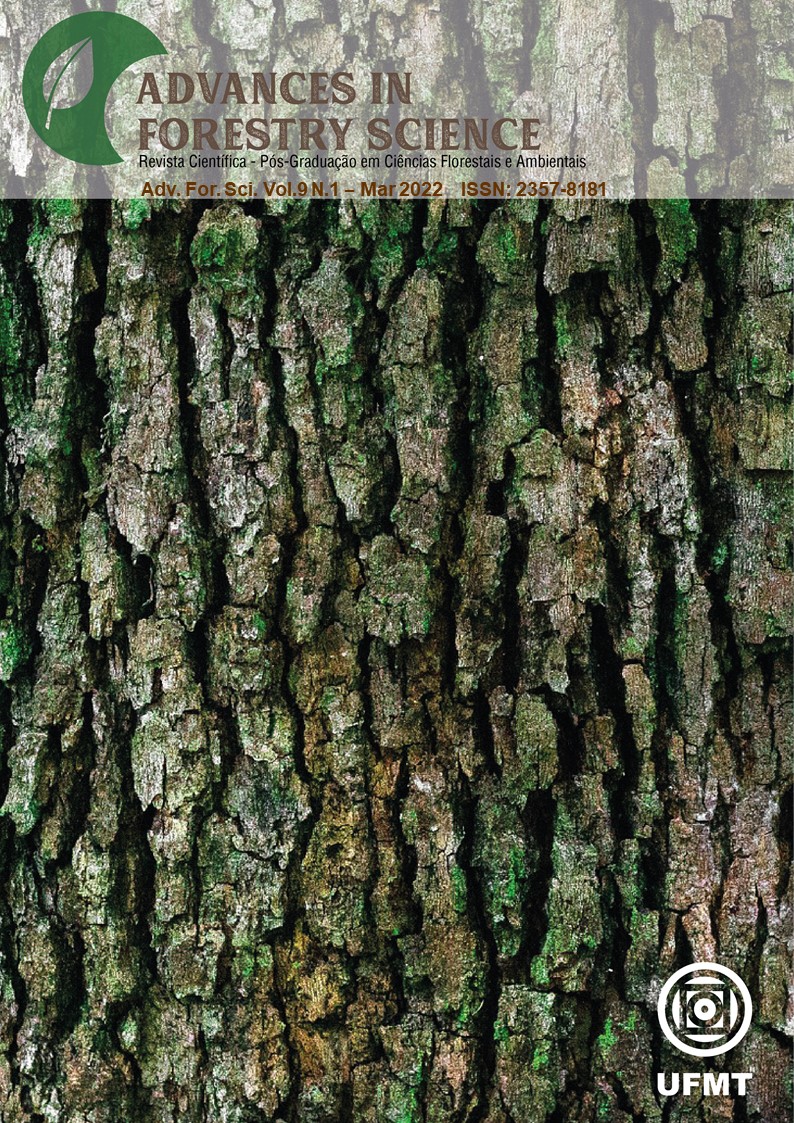Structure and diversity of tree regeneration in a reclaimed area in the metropolitan region of Maceió-Alagoas, Brazil
DOI:
https://doi.org/10.34062/afs.v9i1.11948Abstract
The monitoring of natural regeneration in implanted areas makes it possible to predict the behavior and future development of the forest. This forecast can guide strategies to be adopted to accelerate successional processes, especially in areas subject to anthropic pressures. The objective of this work is to characterize the floristic richness, diversity, successional structure and quantify the natural regeneration after 17 years of forest implantation in an urban area in Maceió - AL. 24 sampling units (20m x 20m each) were randomly allocated in an area of 4.2 hectares, where individuals with height greater than 0.5 meters and dbh less than 5 cm were sampled in three classes of plant size (CL). Floristic, species diversity and natural regeneration rates were quantified by plant (RNC) and total (RNT) size class. We found 100 species, belonging to 37 families. Fabaceae was the highlighted family, with 27 species. The Bootstrap richness estimator indicated that 86.7% of the species possible to occur in the area were sampled. The area has an estimated density of 6,922 ind.ha-1, Shannon diversity (H') of 3.04 nats.ind-1 and Pielou Equability (J) of 0.66. Species with the highest RNT were: Vismia guianensis (11.3%), Xylopia frutescens (9.5%) and Miconia Albicans (6.0%). The distributions of species in successional groups were: Pioneer (24%), Early Secondary (34%), Late Secondary (19%), Climax (5%) and Unclassified (18%). Such aspects indicate that the forest component, even submitted to constant anthropic pressures, is in natural process of ecological succession with parameters similar to those found in Ombrophilous Forests.
Downloads
Downloads
Published
Issue
Section
License
All copyright must be assigned to the Federal University of Mato Grosso.

